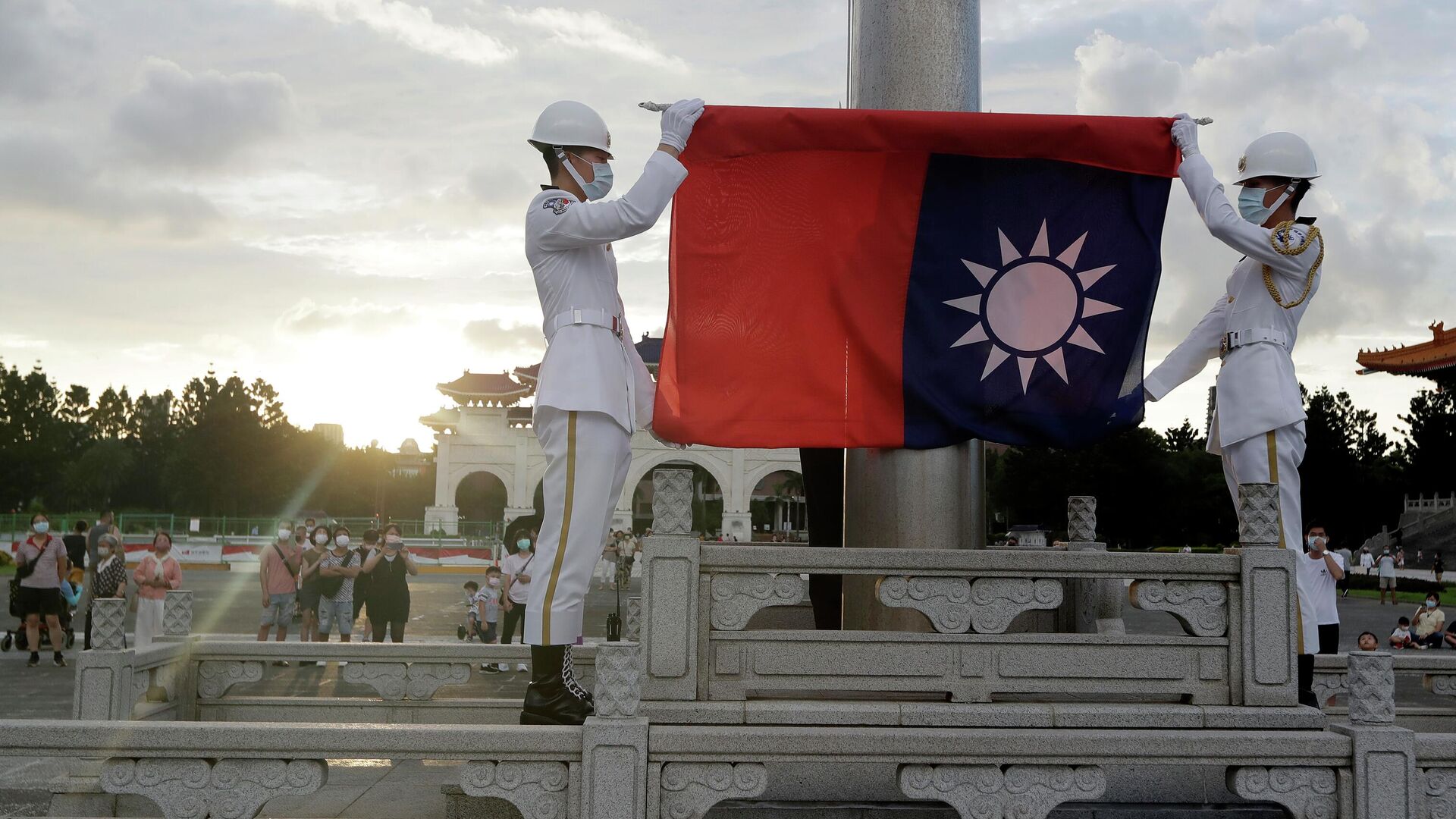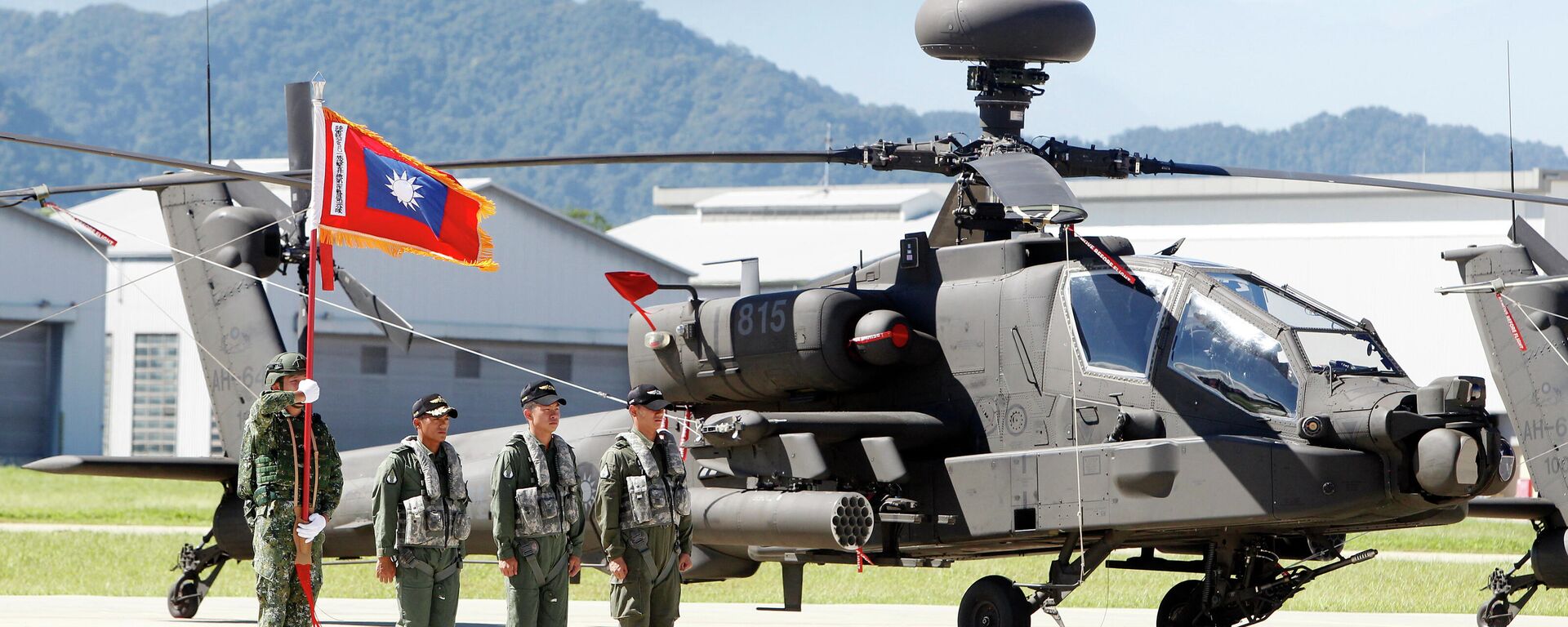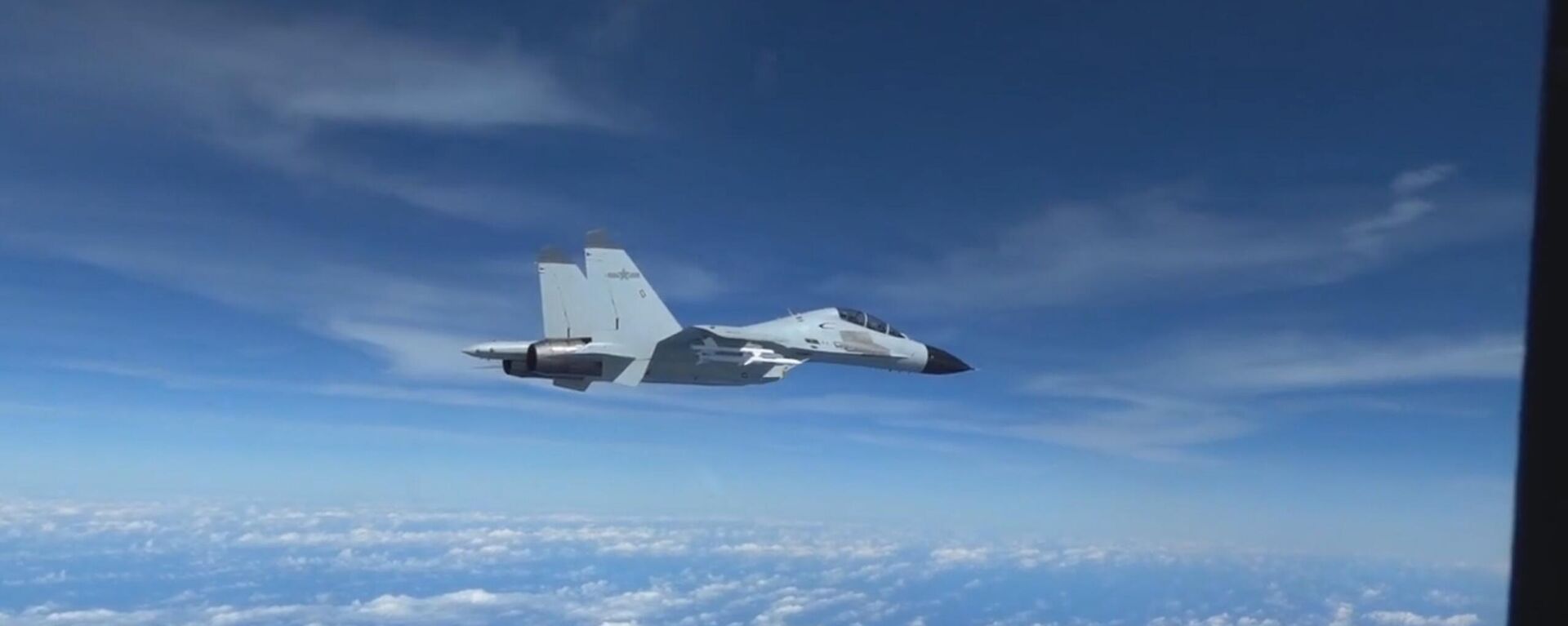Beijing Puts Taiwan Reunification Plans ‘On Fast Development Track’, Chinese Lawmaker Says
20:04 GMT 28.02.2023 (Updated: 12:46 GMT 19.06.2023)

© AP Photo / Chiang Ying-ying
Subscribe
Following an “extraordinary year” in cross-strait relations, the People’s Republic of China (PRC) is reportedly stepping up its efforts to bring Taiwan back into its orbit, a Chinese lawmaker has said. The island has remained autonomous from Beijing since 1949, thanks to foreign backers like the United States.
Ahead of a meeting of the country’s national legislature, the National People’s Congress, later this week, a Chinese lawmaker has indicated that reunification with Taiwan is near the top of the agenda.
“The [Communist] Party’s overall strategy for resolving the Taiwan issue in the new era has basically taken shape, and the strategic goals and focus of the future reunification cause have also become very clear,” NPC deputy Li Yihu told Chinese media in a Monday interview.
“The mainland will promote national reunification on a fast development track,” added Li, who is also dean of the Taiwan Research Institute at Peking University.
Li noted that 2022 had been an “extraordinary” year for cross-strait relations that would “have a certain impact on the future direction” of that relationship.
Weapons and Visits
Last year, the US continued its trend of funneling weapons to the government in Taipei, encouraging them to develop plans for asymmetric warfare in case China launched an invasion of the island. The Biden administration claimed Beijing was studying Russia’s special operation in Ukraine, which began in February 2022, and could either launch an attack on Taiwan amid the Ukraine conflict or was perhaps given pause by the fact that Moscow did not immediately achieve its aims in the operation.
However, relations reached their nadir in August, when then-US House Speaker Nancy Pelosi (D-CA) flouted Chinese warnings and visited Taiwan, meeting with senior Taiwanese leaders and denouncing the PRC from across the strait. The visit prompted a furious response from Beijing, which held massive war drills near Taiwan, including firing ballistic missiles over the island to splash down in the Philippine Sea.
Later that year, the pro-independence party of Taiwanese President Tsai Ing-wen, the Democratic Progressive Party (DPP), sustained a stunning loss in local elections as the Chinese Nationalist Party (Kuomintang, KMT) made major headway. The KMT favors relations with the mainland over seeking independence, but does not favor reunion.
The government in Taipei is all that remains of the old Republic of China that once governed the entire country from 1912 until 1949. When the communist Red Army triumphed in the civil war and founded the PRC in Beijing, it established control over the mainland and Hainan, but failed to cross the Taiwan Strait, thanks to US Navy support, and the RoC stayed in power. In the decades after, all but a handful of small nations changed their recognition of the legitimate Chinese government from the RoC in Taipei to the PRC in Beijing - including the United States in 1979.
Despite this, Washington has continued to send Taipei support, including military weapons. China has called such actions a violation of its sovereignty and intervention in internal Chinese affairs.

23 February 2023, 17:35 GMT
Red Lines
Beijing has offered Taiwan a “One Country, Two Systems” arrangement similar to that applied to Hong Kong and Macau when they reunified with China in the 1990s. The system has allowed their capitalist systems and liberal democratic political structure to be largely maintained as the territory is incorporated into the larger socialist republic.
Li didn’t give specifics about the NPC’s proposed plans for Taiwan reunification, but said the 20th Congress of the Communist Party of China in October had laid out the “highest guiding principles,” including enshrining its opposition to Taiwanese independence in the party’s constitution.
The CPC also issued a white paper on the topic in August, its first in two decades, making clear it would stop Taiwanese independence by any means and reunite it with the mainland, peacefully if possible, but not discounting the possibility of using force.
“We will work with the greatest sincerity and exert our utmost efforts to achieve peaceful reunification. But we will not renounce the use of force, and we reserve the option of taking all necessary measures,” the white paper said.
“This is to guard against external interference and all separatist activities. In no way does it target our fellow Chinese in Taiwan. Use of force would be the last resort taken under compelling circumstances. We will only be forced to take drastic measures to respond to the provocation of separatist elements or external forces should they ever cross our red lines.”
In November, Chinese President Xi Jinping told US President Joe Biden at a face-to-face meeting in Bali, Indonesia, that “the Taiwan question” was China’s “first red line that must not be crossed,” saying it was at “the very core” of China’s core interests.
Beijing has warned that if Taiwan declares independence, there will be war. The United States for many years maintained a policy of “strategic ambiguity” about whether it would defend Taiwan in the event of a Chinese attack, in order to deter either side from changing the status quo, but recent comments by Biden, Pelosi, and other US leaders seem to have largely shredded any doubt that the US would go to war over Taiwan as well.



